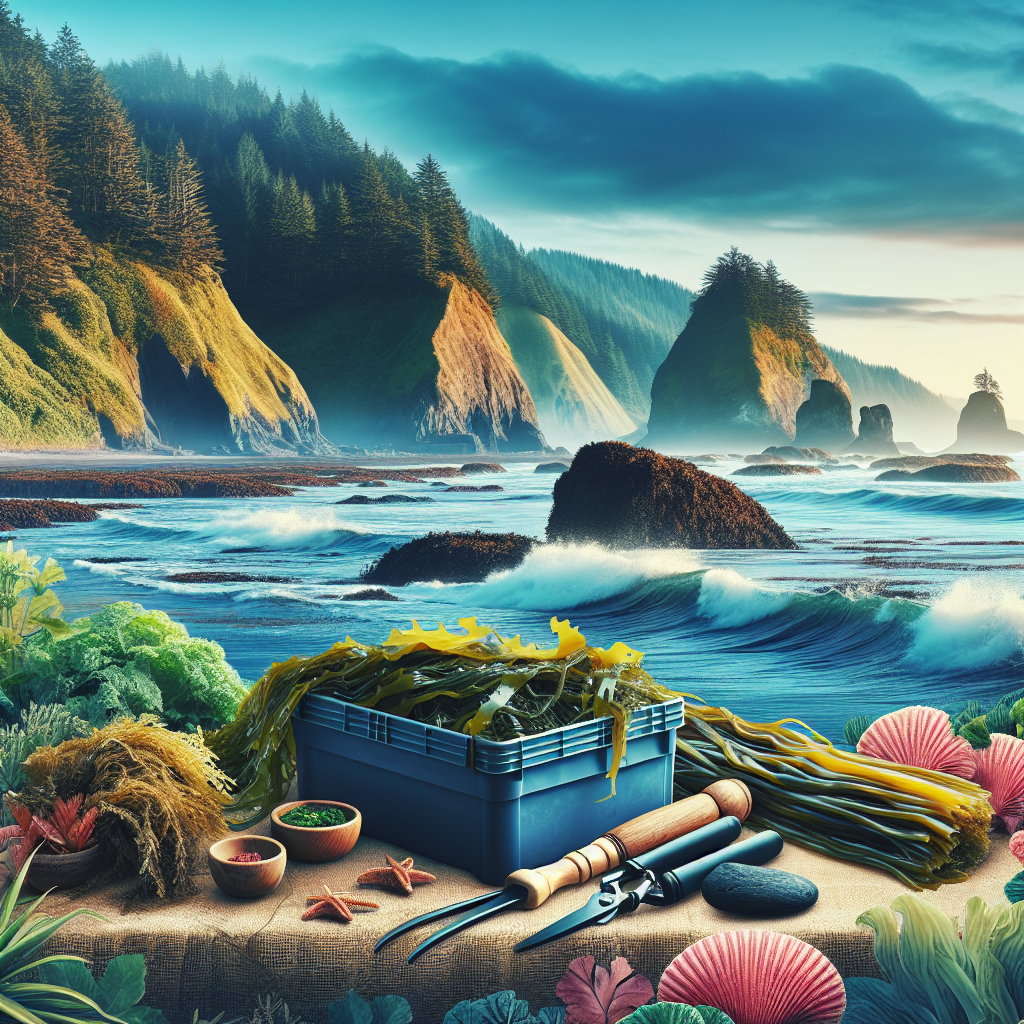Foraging Seaweed on the Oregon Coast: A Beginner’s Guide
Why Forage Seaweed on the Oregon Coast?
There’s a hidden treasure along our beautiful coastline, often overlooked by visitors and locals alike. It’s seaweed, a nutrient-rich, tantalizing taste from the sea. It’s abundant, sustainable, and as Oregon-tastic as it gets. Not to mention, seaweed foraging is a fantastic way to connect with nature and enjoy our state’s scenic beauty.
Benefits of Seaweed
Seaweed is a nutrition powerhouse, packed with vitamins and minerals. It’s also an Oregon delicacy. Try incorporating it in your home recipes, or check out the creative menus at local eateries like the Drift Inn in Yachats or the Local Ocean in Newport. They’ve truly mastered the art of cooking with seaweed.
Best Seaweed Species to Forage in Oregon

Any Oregon seaweed enthusiast would recommend three types, mainly for their abundance and ease of preparation. Sea lettuce is bright green and has a mild flavor. Nori is a darker seaweed used in sushi rolls. And bull kelp makes for the perfect pickles.
Where to Forage
A quintessential foraging adventure awaits at the tide pools along the Oregon coast. Tillamook has some of the most generous seaweed patches, specifically Oceanside and Short Beach. Further south, Strawberry Hill, in Lane County, is another prime spot. Remember to respect the diverse marine life and tread lightly, we share these magnificent sites with a host of unique creatures.
The Rules of Sustainable Foraging
Being a discerning forager, it’s vital to respect Oregon’s natural resources. Keep in mind the “1/3 rule”- that is, only take one-third of the seaweed from any patch. And never yank seaweed from the rocks. Cut it, allowing it to regrow and sustain the ecosystem.
When to Forage
In Oregon, timing is everything. Spring to early summer is prime seaweed foraging season. That said, always check tidal predictions before heading out. Foraging is best at low tide and remember, coastal weather changes rapidly, especially in the afternoon. Be prepared with extra layers and stay safe.
Tips for Processing and Eating Seaweed
Local foragers usually dry seaweed in the sun, although a cool oven would do the trick too. It can be ground into a powder used as a seasoning or rehydrated for cooking. For culinary inspiration, the Saturday Market in Eugene often showcases innovatively prepared seaweed dishes.
One Final Note of Caution
All locals know to give Agate Beach’s decomposing kelp a wide berth. It emits noxious gases and it’s best to steer clear. Also, always positively identify seaweed before consuming – not everything that washes ashore is safe to eat.
In Summation
There you have it. You’re now equipped to embark on your seaweed foraging adventure. Remember to pay heed to local wisdom, respect nature, and cherish each moment along our beautiful coast. It’s about more than just the seaweed. It’s about the morning mist over the Yachats River, the wind-swept trees in Bandon, and the calls of seabirds in Brookings. It’s about connecting to our beautiful Oregon in a unique and sustainable way. Enjoy it all, and remember to share your love of Oregon with others. Happy foraging!
